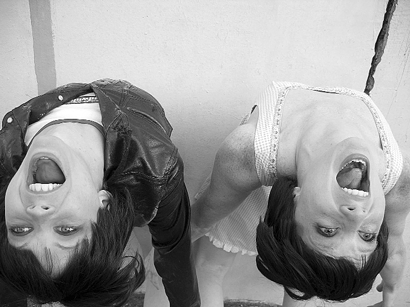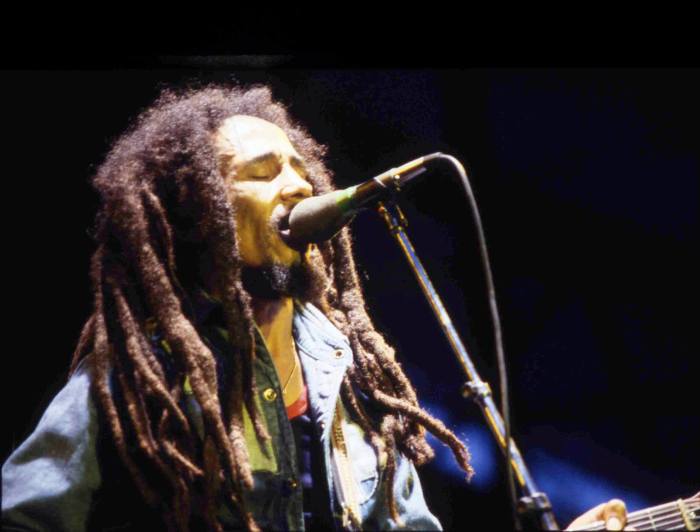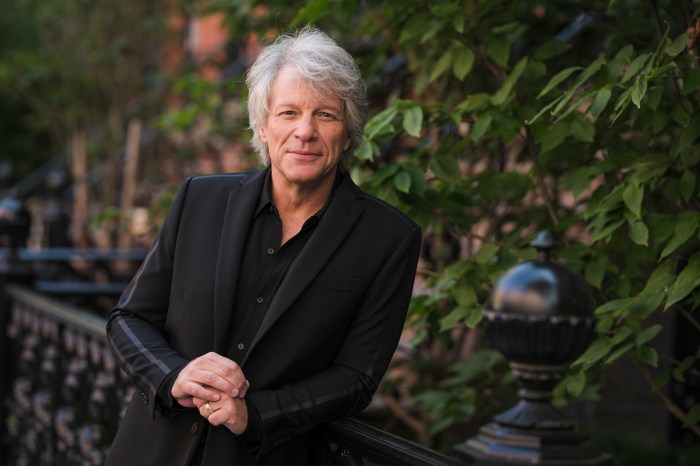Andrea Haenggi’s dancers, black bag in hand, find inspiration in Iraqi art
The best art can be experienced. Andrea Haenggi’s exceptional site-specific work—blast wall art—calls attention to the environment and the idea of direct transformation. The work—inspired by the non-violent subversive acts of Iraqi artists—took audiences on a tour through the gentrifying hipster Brooklyn havens DUMBO and neighboring Vinegar Hill, skirting the Farragut Houses, a public-housing complex, along the outer brick wall of the Brooklyn Navy Yard and leading them to the handball courts of Commodore Barry Park, a place at times vibrant when not desolate, even dangerous.
The procession began at a gallery on Pearl Street just north of the Manhattan Bridge in Brooklyn, when four action performers burst from the gallery out into the streets and up against the walls of the buildings and bridge arches. Dressed in white shorts, blue tops, boots and wigs, they ran through the streets, posed and lingered, stopping in the middle of intersections with palms held out to halt potential traffic. As the audience equipped with requisite earplugs moved past warehouses decorated with graffiti, luxury renovations, townhouses and corrugated iron gates, the lively foursome darted from hidden alcoves, hung on railings, sat on stoops and danced laconically facing walls.
At a Buddhist temple, they shuffled sideways along the perimeter, reaching in between the yellow-painted cinder block columns repeatedly as if trying to grab onto some spirituality. In the playground at the back of PS 307, they frolicked around a little, black, vinyl bag, hunched over, bent-kneed, arms swinging. At the Navy Yard, they danced facing the brick, rushed towards the crowd, and clambered on poles at the bus stop.
On arrival at the handball courts, the earplugs were surrendered and a wall was wrapped in red plastic before the audience was ushered against it.
Dancers Einy Aam and Tori Sparks took over the action under the command of jazz artist William Hooker—on drum set at the center of the courts—whose percussive talents infused the environment with tense purpose. Like the quartet, the duo wore short black wigs, Aam in black and silver, Sparks in sleeveless dress and tall black boots. With arched backs they entered the space walking backwards, chins to the sky, mouths gaping wide. As they reached the wall, video images appeared—an empty blue shape with Sparks smiling in a bicycle helmet, waving and retreating as if from the edges of the frame—a motif that repeats several times.
The live performers cavorted on the concrete surface, throwing off penche and low arabesque turns with sharp bent elbows leading the movement, wriggling their shoulders and letting their arms hang loosely. Their delivery was thrust and parry; the energy raw, powerful and sexy. Cheesy superimpositions, projected onto the wall, of the dancers lounging like giants in the sea were superseded by a beautiful projection of ocean waves cast onto the live performers, legs tangled against the slab. But the beauty was short-lived, as armed action figures in red and black were animated in. Parallel editing established a conflict between these and a more colorful and childlike plastic army.
In real space, the black bag was brought out and unzipped. The action performers hurled water balloons stored inside it and along the fence at the wall. Solid color projections took on abstract painting qualities as the concrete became more saturated—referencing Iraqi artists’ transformations of “blast walls” that inspired the work.
Aam and Sparks pranced together like mantises before being joined by the group in repeating the first sequence, heads back, mouths open, walking backwards toward the red-wrapped audience wall until they were on it, tearing down the plastic with their feet. Overhead, images of red flowers filled the canvass that had been previously ignored, the final image showing Aam laughing, smearing herself with banana.
gaycitynews.com


































